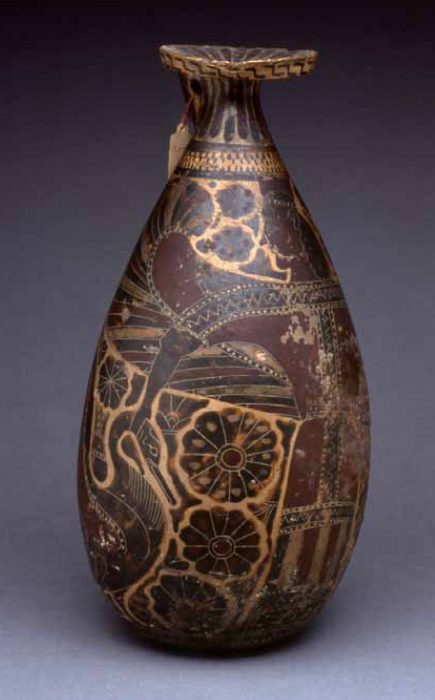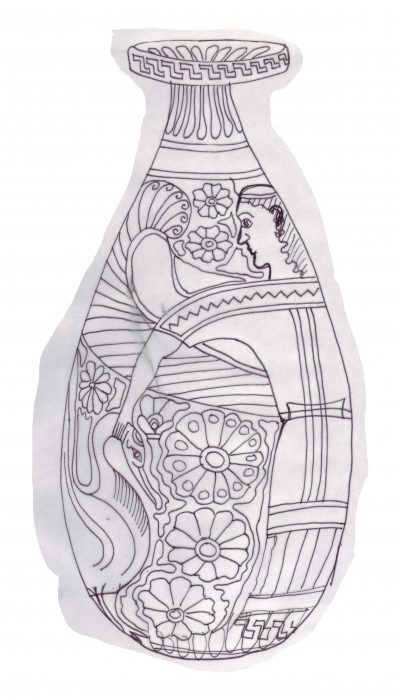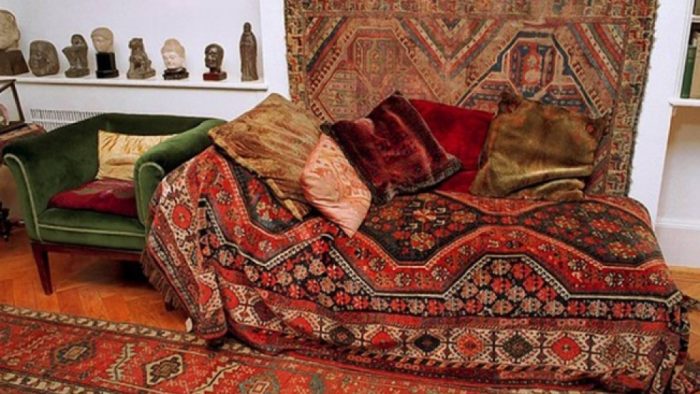Freud’s Alabastron
This painting of an alabastron is one of my twelve smaller gilded paintings which together form Significantly Freud: Icons for a Jewish Atheist, representing my favourite twelve artefacts from the private collection of Sigmund Freud.
An alabastron is a small type of pottery or glass vessel used in the ancient world for holding oil, especially perfume or massage oils. The design of the first Egyptian alabastron was inspired by the palm tree with a column shape, a palm capital and a stand. Later designs were made from glass decorated with various patterns, such as scallops or abstract patterns of rings or zigzags.
Around the 7th century BC, the alabastron design spread to Greece and became an important element of ancient Greek pottery.
This image represents the largest Corinthian vase in Freud’s collection. Corinth was one of the oldest and richest city-states in ancient Greece. It was famous for its vases. The original artefact is 282 mm high, made from terracotta and dates from the Greek Archaic Period, 600 BC. It is painted in a black-figure style, where a winged mistress of animals is shown subduing a swan.

Die Nächstenliebe (Charity)
The painted red text, Die Nächstenliebe, translates as “Charity”. For me this signifies an alternative explanation for the painted scene, where the goddess shows love, kindness, respect and protection in her service towards all living things.

Freud’s alabastron is a narrow-necked pottery container used by women to hold perfumed ointment or oil. The name comes from “alabaster”, from which they were originally made in ancient Egypt, where the shape was thought to resemble a palm tree.

One of my original sketches for this painting.
“This Corinthian vase is an alabastron, a type of vessel used for storing perfume. The main subject is a winged goddess of animals, a subject possibly derived from Near Eastern mother goddesses with whom the Greeks associated Artemis, goddess of the hunt. Corinthian vase painting often had illustrations of animals, both real and imagined, borrowed from Near Eastern motifs. Grasping the necks of two swans, the goddess wears an embroidered tunic and a headdress called a polos. The style of the painting on the alabastron, with its surface completely covered in a combination of representational and abstract pattern, is typical of early Corinthian pottery.” (Freud Museum, London)

The colour of the frame and desktop in this painting was inspired by this green velvet chair and also the green in part of the geometric rug design.